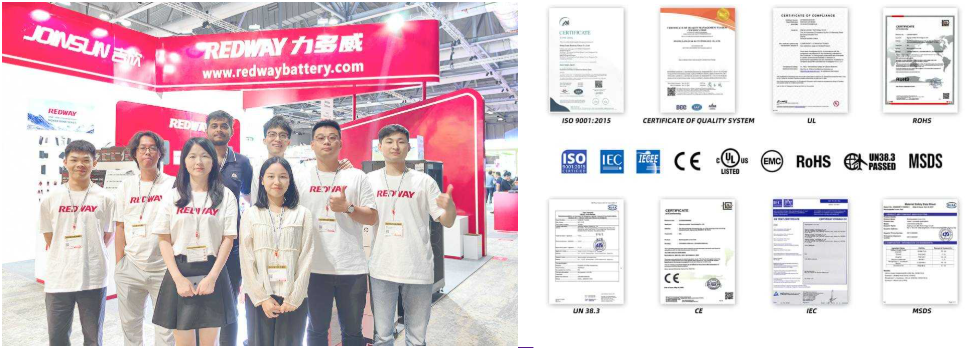Forklift battery packs are essential power sources for industrial equipment, providing energy for electric forklifts. They typically use lead-acid or lithium-ion technology, with lifespans ranging from 1,500 to 5,000 cycles. Proper maintenance, charging practices, and safety protocols ensure optimal performance. Choosing between battery types depends on factors like cost, runtime, and operational demands. Lithium-ion batteries offer faster charging and longer life but at a higher upfront cost.
48V 280Ah Lithium Forklift Battery
How Do Forklift Battery Packs Work?
Forklift battery packs convert stored chemical energy into electrical power through electrochemical reactions. Lead-acid batteries use sulfuric acid and lead plates, while lithium-ion variants employ lithium compounds. Energy is discharged during forklift operation and restored via charging cycles. Advanced battery management systems (BMS) in lithium-ion models optimize performance by monitoring temperature, voltage, and charge levels.
What Are the Types of Forklift Battery Packs?
Two primary types dominate the market: flooded lead-acid (FLA) and lithium-ion batteries. FLA batteries are cost-effective but require regular watering and maintenance. Lithium-ion batteries are maintenance-free, charge faster, and last longer. Nickel-cadmium and gel batteries are less common alternatives, used in specialized environments like cold storage or hazardous areas.
| Type | Maintenance | Lifespan | Charging Time |
|---|---|---|---|
| Flooded Lead-Acid | High | 3–5 years | 8–10 hours |
| Lithium-Ion | Low | 5–7 years | 2–4 hours |
Why Is Proper Charging Critical for Battery Longevity?
Incorrect charging accelerates battery degradation. Overcharging causes overheating and plate corrosion, while undercharging leads to sulfation in lead-acid batteries. Lithium-ion batteries require partial discharge cycles rather than full depletion. Always use manufacturer-approved chargers and follow recommended charging durations. Temperature-controlled charging environments (50°F–86°F) maximize efficiency and lifespan.
Modern chargers with adaptive algorithms can dynamically adjust voltage based on battery state. For lithium-ion, opportunity charging—short bursts during breaks—extends daily runtime without harming cells. Lead-acid batteries benefit from equalization charges every 10–15 cycles to balance cell voltages. A study by the Industrial Truck Association found proper charging protocols reduce replacement costs by 22% annually.
How to Maintain Forklift Battery Packs Effectively?
For FLA batteries: check electrolyte levels weekly, clean terminals, and equalize charges monthly. Lithium-ion batteries need minimal upkeep—wipe surfaces and ensure firmware updates. Both types require clean, dry storage and periodic capacity testing. Avoid deep discharges below 20% capacity. Implement a maintenance log to track watering, charging, and performance metrics.
Use infrared thermometers to detect hot spots during charging, indicating potential failures. For FLA, invest in automated watering systems to minimize labor. Lithium-ion users should calibrate BMS software quarterly to maintain accuracy. A 2023 case study showed warehouses using predictive maintenance tools reduced unplanned downtime by 40%.
What Safety Protocols Apply to Forklift Batteries?
Wear PPE during maintenance to prevent acid burns or electrical shocks. Ventilate charging areas to disperse hydrogen gas emitted by FLA batteries. Use spill containment pallets for lead-acid units. Never expose lithium-ion batteries to temperatures above 140°F. Follow OSHA guidelines for handling, storage, and emergency procedures for battery-related incidents.
Which Factors Influence Forklift Battery Costs?
Initial costs range from $2,000 for FLA to $15,000+ for lithium-ion. Long-term expenses include water, energy, and labor for FLA maintenance. Lithium-ion’s higher efficiency reduces energy costs by 30–50%. Consider total cost of ownership (TCO): lithium-ion often outperforms FLA in high-usage scenarios despite higher upfront investment.
| Cost Factor | FLA | Lithium-Ion |
|---|---|---|
| Initial Purchase | $2,000–$6,000 | $10,000–$20,000 |
| Annual Maintenance | $500–$1,200 | $100–$300 |
| Energy Cost/Year | $800 | $400 |
What Environmental Impact Do Forklift Batteries Have?
Lead-acid batteries pose recycling challenges due to toxic lead and sulfuric acid. Over 99% of FLA components are recyclable. Lithium-ion batteries contain cobalt and lithium, requiring specialized recycling to recover rare metals. Both types contribute to e-waste if improperly disposed. Opt for certified recyclers to minimize ecological harm and comply with EPA regulations.
How Are Future Technologies Shaping Forklift Batteries?
Solid-state lithium batteries promise higher energy density and faster charging. Hydrogen fuel cells are emerging as zero-emission alternatives for continuous fleet operations. Smart batteries with IoT integration enable real-time diagnostics and predictive maintenance. These innovations aim to reduce downtime, enhance sustainability, and lower operational costs.
Expert Views
The shift toward lithium-ion is irreversible in material handling,” says a Redway Battery engineer. “Operators gain 30% productivity from opportunity charging alone. However, hybrid solutions combining FLA for low-intensity tasks and lithium for high-demand cycles are becoming popular. The next frontier is AI-driven energy management—predicting failures before they occur.”
Conclusion
Forklift battery packs are evolving rapidly, with lithium-ion and smart technologies leading the charge. Prioritizing correct charging, maintenance, and safety extends battery life and ROI. As sustainability mandates tighten, adopting advanced battery systems will be crucial for competitive, eco-efficient operations.
FAQ
- Q: How often should I water lead-acid batteries?
- A: Check weekly and add distilled water after charging if plates are exposed.
- Q: Can lithium-ion batteries explode?
- A: Rarely, but thermal runaway is possible if damaged or overheated. Use BMS-equipped models.
- Q: What’s the average lifespan of a forklift battery?
- A: 5–7 years for lithium-ion vs. 3–5 years for lead-acid with proper care.





